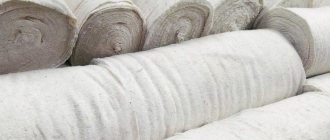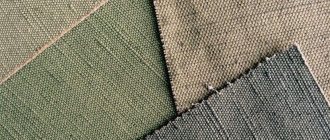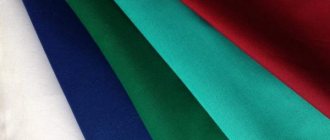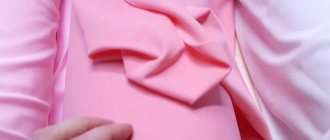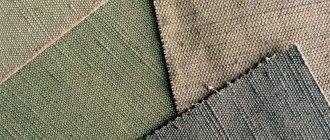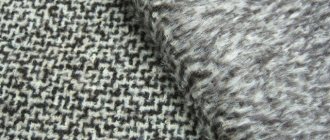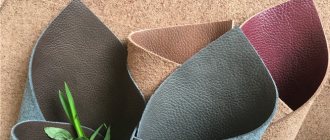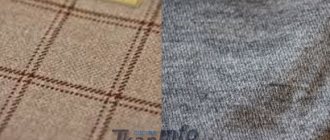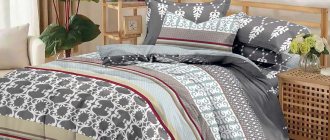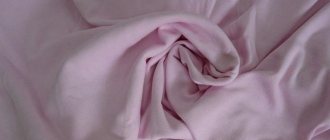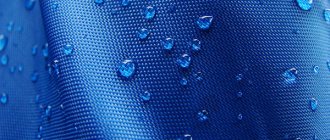Natural fabrics have always been popular due to their unique characteristics. Today, artificial materials are added to them, which help improve the properties of fabrics and give them new ones. All-natural wool with thin transparent silk are quite expensive types of textiles that differ in properties and fiber structure. Silk threads have high strength, while wool retains heat better and is more wear-resistant. Both types of matter are of animal origin, and therefore belong to natural materials for sewing clothes and home textiles.
Types and properties of wool and silk transparent fabrics
They are made from animal fibers. Silk is created from the material produced by silkworm cocoons, and wool is obtained from animals - goats, camels, sheep, alpacas. These materials differ in their composition. Find out about the characteristics and description of light fabric here.
Today, this composition of textiles is used for sewing coats and suits, albeit quite rarely.
What is the name of ancient thick woolen fabric mixed with fine silk?
An ancient dense woolen fabric, into which either silk or cotton fibers were mixed, was called camelot. It was always created on the basis of camel down. This fabric was usually used to make clothing. With cotton mixtures they were used to sew simple things for peasants. It was rough and easily wrinkled. At the same time, if silk fibers were added to the fabric, it became very soft, slightly loose. Quite expensive clothes for the nobility were made from it. Read about pleated fabric here.
Advantages and disadvantages
Wool has good heat-protective properties. It has increased density and low creasing. Therefore, a composition with 100% content of crimped thick fibers is often used to create winter clothing. These materials are durable, beautiful, have high wear resistance, and can be treated with moisture and heat.
Silk textiles are soft, pleasant to the touch, and have a certain degree of gloss. It is durable, lightweight, wrinkle-resistant, and beautiful. The material does not get dirty so quickly due to the smooth surface of the front side of the products and does not shrink. This article will tell you about the characteristics of the moleskin material.
Wool is characterized by increased dust holding capacity, and therefore products made from it have to be cleaned frequently. On the other hand, silk does not tolerate exposure to ultraviolet radiation, and in its pure form is quite expensive.
Despite the well-established opinion that wool is a fairly heavy, hot material, expensive varieties are no different from silk in terms of transparency.
Properties and quality
Things made from these materials have a number of distinctive properties:
- high degree of hygroscopicity;
- breathability;
- hygiene;
- high strength;
- naturalness of the composition.
A significant disadvantage of such textiles is the ability to shrink if not properly cared for, as well as the formation of pills.
Both materials differ in bactericidal properties. That is, microorganisms do not linger on the fibers of the threads, and therefore this type of textile will be in demand among people with excessive sweating and allergies. Find out about the composition and description of Dior fabric at this link.
Wool has healing properties, and therefore belts and knee pads are often made from it. They produce heat, static electricity, and local irritation. Therefore, it is often used in the treatment of inflammatory joint pathologies.
Depending on the type, as well as processing features and the presence of artificial fiber impurities in the composition, the properties of the material may vary.
Types of wool fabrics and their use
The main types of wool fabrics:
- Woolen fabric: what types of woolen fabrics are divided into. Characteristics of species and properties
- Gabardine. Fabric with a twill weave with a small rib. Coats, jackets, and suits are made from it.
- Jersey. Soft, well-draped fabric. Used for sewing suits, dresses, skirts.
- Reps. Thin but dense material. Suitable for casual suits, skirts, trousers.
- Tweed. Fabric with a characteristic small rib and small pile. A special feature of the fabric is the weaving of thin multi-colored threads. Tweed suits, jackets, and coats are popular.
- Flannel. Soft fabric with a little fleece. Used for sewing home clothes, pajamas, and children's clothes.
Wool and silk production
Pure silk is quite an expensive material, which is used for sewing luxury items and bed linen. But there are also analogues with impurities that make it possible for everyone to buy these textiles:
- Toile.
- Satin.
- Atlas.
- Crepe.
- Chiffon.
- Gas.
- Taffeta.
- Organza.
- Silk DuPont.
- Wild silk.
Clothing made from it has a glossy appearance and low heat-protective properties, which is why it is best worn in the warm season. Transparent thin silk fabric is highly durable. Its thread strength is comparable to steel wire of the same diameter. Wool is divided into the following subspecies:
- Velours.
- Felt.
- Tale.
- Gabardine.
- Cashmere.
- Cloth.
- Drap.
- Reps.
- Flannel and so on.
Naturally, heavy fabric with a pattern will cost a little more, but only if the quality of the material is appropriate.
Depending on the type of fiber, the cost of textiles will differ. The coloring of the product and the type of processing also affect the price of the material. This material will tell you about the types of linen fabric.
Linen
A fabric that also appeared thousands of years ago. Flax was grown in many countries: India, China, European countries and Rus'. Therefore, it is now difficult to say exactly who was the first to think of making fabric from a plant. Previously, the entire production process was manual, now almost everything is done by machines. The flax stems are soaked and crushed so that the fibers are separated from each other, and the resulting yarn is used to make threads. And they are used to weave material.
Natural linen fabric has several disadvantages: it wrinkles quickly and can fade in the sun. But today these shortcomings are easily corrected by adding synthetic fibers and permanent dyeing.
But lovers of everything environmentally friendly and natural do not pay attention to these “little things”. Therefore, linen fabric has many more advantages. It is durable and products made from it can be worn for decades. It perfectly absorbs moisture, allows air to pass through, does not electrify and is a hypoallergenic material. Therefore, linen items are ideal for summer; they really don’t get hot. Linen clothing is also easy to care for: it is easy to wash and dries quickly.
Why are wool and silk fabrics so popular?
The popularity of materials of animal origin can easily be explained by their properties and characteristics:
- They are more pleasant to the body.
- Less likely to provoke allergic reactions.
- They have good wear resistance.
- They are distinguished by their medicinal properties, which are completely absent in artificial analogues.
The cost will depend on the type of finishing, creation technique, and weaving of threads.
To distinguish natural wool from artificial wool, it is enough to set fire to one thread. It flares up quickly, but burns for a long time.
What type of fabric is this?
Silk is a natural animal fiber made from a very fine continuous thread that is used to make luxurious and expensive products. Each caterpillar produces one silk thread, the length of which can reach 1.3 km.
Silk colors
Several threads form a silk thread, they are woven on looms and can be dyed, since the natural color of silk is white.
Asia is still the silk magnate, but production has begun to expand in France, Greece, Romania, Italy, Brazil, Poland, Spain, Syria and Persia, with Zurich being the main market.
Scope of application
Silk fabrics are used to make bedding, underwear, dresses, skirts, blouses, and home textiles. There are a lot of subspecies depending on the amount of impurities. Wool is used to create various types of clothing - from underwear to coats, as well as technical products such as burlap, ropes, and so on.
Pure wool is used to produce winter clothing.
Silk components
The chemical composition of the fabric is similar to animal hair or human hair; fibroin and sericin predominate in the composition; in addition, the structure of the thread contains amino acids, fats, waxes, sodium and potassium.
The birthplace of the famous fabric is China, where production began several thousand years BC. What is silk made from? The silkworm is an insect that produces silk fiber. How is silk made? Its cocoon is unwound into the finest fibers and twisted, this is done to obtain denser threads.
Care instructions
Both types of materials require compliance with the following rules of care:
- Silk does not tolerate rough washing.
- This type of textile does not like exposure to ultraviolet light.
- It is better to use the “silk” mode for washing and ironing.
- No softeners or aggressive chemicals such as bleaches are used on silk fabrics.
- Wool should not be exposed to extremely high temperatures.
- Woolen fabrics do not tolerate rough washing or centrifuge drying, and may be subject to deformation and shrinkage.
- It is better to use special modes for washing in a machine, as well as chemicals intended for this.
In this way, it will be possible to maintain the original appearance of the item for a long time without deformation or signs of destruction of the material.
Advantages and disadvantages
This unusual fabric has all the advantages of natural materials. However, it is not without some disadvantages, which are important to consider when purchasing and sewing products from nate.
Pros:
- natural composition;
- ease;
- UV protection;
- pleasant silky surface to the touch;
- the material holds its shape well;
- strength;
- softness;
- spectacular appearance;
- silk fabric drapes easily;
- dries quickly;
- Wool material retains heat well.
Minuses:
- instability of coloring: over time, the material may fade;
- tendency to shrink;
- the material may fade;
- high price.
The material has a rich color palette of basic, pastel and bright shades. The most popular are white, milky, peach, blue, beige and lilac tones.
In addition, the canvas can be either plain or printed. The most common is a medium sized floral print.
Results
These natural matters have become firmly established in everyday human life. They differ:
- Unique properties, hygiene, hygroscopicity and so on. Corduroy fabric is also hygroscopic.
- Requires careful handling and care.
- They are completely natural and of animal origin.
- Wool has pronounced medicinal properties, and silk has bactericidal properties.
- They are used for the production of various types of clothing, home and technical textiles.
- They have a lot of textile options, which differ in their parameters depending on the amount of impurities.
Fabric characteristics
What other properties does silk have?
- It does not electrify, the dress flows beautifully over the body, giving the image sophistication and elegance.
- Smoothness, soft shine of the fabric, play of color - all this gives silk products sophistication and nobility.
- The natural color of the fiber is white and beige, since silk threads are easily dyed; there is a wide range of shades on the market.
